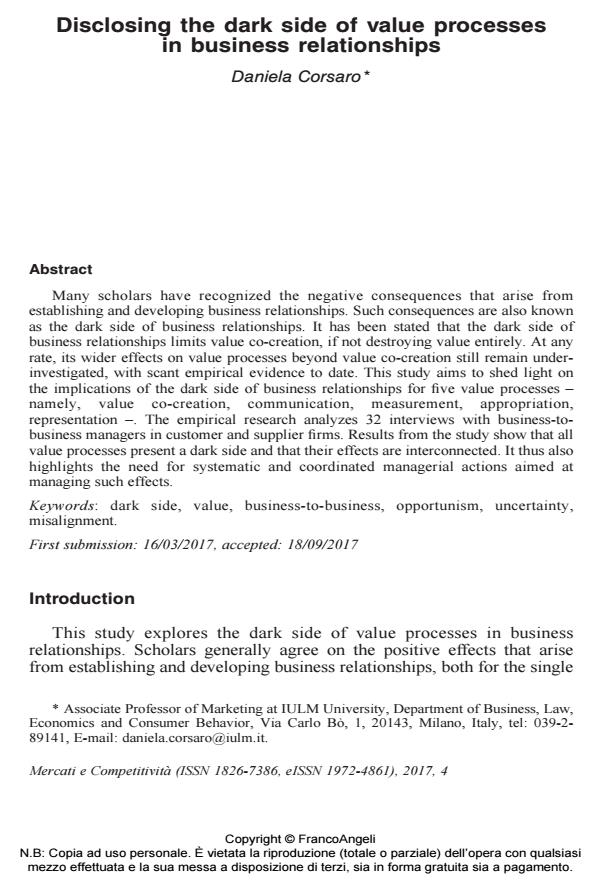Disclosing the dark side of value processes in business relationships
Journal title MERCATI & COMPETITIVITÀ
Author/s Daniela Corsaro
Publishing Year 2017 Issue 2017/4
Language English Pages 25 P. 125-149 File size 148 KB
DOI 10.3280/MC2017-004007
DOI is like a bar code for intellectual property: to have more infomation
click here
Below, you can see the article first page
If you want to buy this article in PDF format, you can do it, following the instructions to buy download credits

FrancoAngeli is member of Publishers International Linking Association, Inc (PILA), a not-for-profit association which run the CrossRef service enabling links to and from online scholarly content.
Many scholars have recognized the negative consequences that arise from establishing and developing business relationships. Such consequences are also known as the dark side of business relationships. It has been stated that the dark side of business relationships limits value co-creation, if not destroying value entirely. At any rate, its wider effects on value processes beyond value co-creation still remain underinvestigated, with scant empirical evidence to date. This study aims to shed light on the implications of the dark side of business relationships for five value processes - namely, value co-creation, communication, measurement, appropriation, representation -. The empirical research analyzes 32 interviews with business-tobusiness managers in customer and supplier firms. Results from the study show that all value processes present a dark side and that their effects are interconnected. It thus also highlights the need for systematic and coordinated managerial actions aimed at managing such effects.
Keywords: Dark side, value, business-to-business, opportunism, uncertainty, misalignment.
Daniela Corsaro, Disclosing the dark side of value processes in business relationships in "MERCATI & COMPETITIVITÀ" 4/2017, pp 125-149, DOI: 10.3280/MC2017-004007